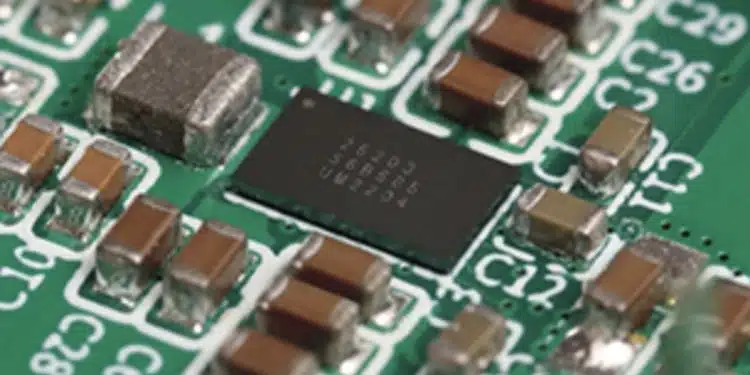Murata’s 4A, switched-capacitor achieves 99% peak efficiency: Industry first, Divide-by-3 and 2 ratios with dynamic selection.
Murata announced the launch of the PE25203 selectable divide-by-3 or divide-by-2 switched-capacitor, charge pump targeting laptop applications to convert a 3S/2S battery input to a 1S output for downstream PMICs.
With a 1.0mm z-height solution in a WLCSP package, the PE25203 is ideal for low-profile motherboard designs and LCD panels. The device is based on Murata’s unique lossless charge pump technology with an interleaved architecture that provides low input and output ripple performance.
The PE25203 dynamic switchover function allows the charge pump ratio to change during operation depending on input battery voltage. This dynamic switchover feature is helpful in low battery events by switching from a divide-by-3 to a divide-by-2 ratio to avoid downstream PMICs from entering the Under-Voltage LockOut (UVLO) event.
“As system core power is getting more efficient, the peripherals contribute a larger percentage of the system power loss. System architects have traditionally relied upon lower efficiency buck converters as an intermediate rail for these peripherals.”, said Shuji Mikami, general manager of the low-power products department. “The PE25203 breaks the mould with Murata’s leading edge, switched-capacitor technology by enabling system architects to push beyond the efficiency boundary with exceptionally high 99% peak efficiency.”
Features
The PE25203 operates in a selectable divide-by-3 or divide-by-2 for 3S/2S battery voltage. The switched-capacitor, charge pump-based DC-DC converter supports an output voltage range of 2.75V to 5.0V with load currents of 4A and up to 20W delivered to the external load. With an operating temperature range of −40 to +85°C, the PE25203 is fully protected with input under voltage, overcurrent protection, and thermal shutdown fault detection.
































